The 20th annual Sedona Visual Artists Coalition Open Studios Tour kicks off on Friday, April 28, and runs through Sunday, April 30, from 10 a.m. to 5 p.m. each day.
This year, 48 artists will showcase their work in ceramics, pastels, colored pencils, digital painting, fiber, glass, jewelry, mixed media, mosaics, painting, photography, sculpture, watercolor, weaving and woodworking.
The self-guided tour throughout the Verde Valley will begin in Camp Verde and continue on to Cottonwood, Clarkdale, Cornville and Sedona. However, there are no strict guidelines as to where to start or end the tour.

Daulton Venglar/Larson Newspapers
Master Ceramacist: Mike Upp
Mike Upp, president of SVAC for the last four years, has been participating in the studio tour as a ceramicist for 10 years.
Upp said that “70% of the artists in open studios are veterans — maybe even more than that. I think there are only eight new people on the list this year.”
Upp and his wife Sharon own Earth and Fire Ceramic Design Studio in Cornville.
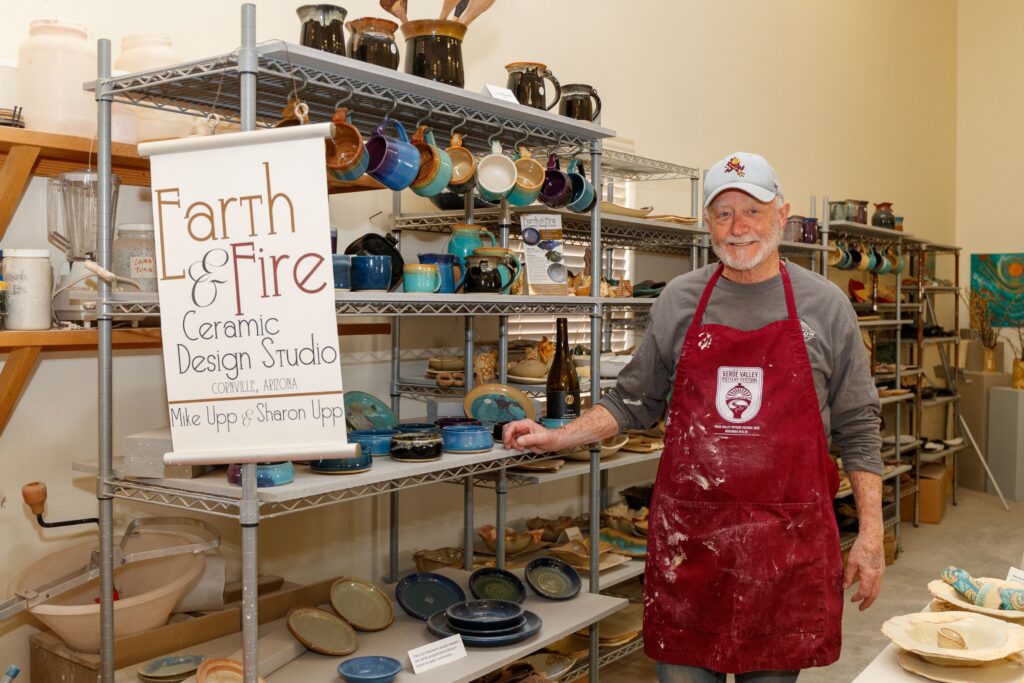
Sharon studied ceramics in southern California, Portland, Ore., and Sedona. She said that she is inspired by the beauty of nature and strives to incorporate these influences within the free-flowing forms that she produces.
In the 1970s, Upp attended Arizona State University to study ceramics. After graduation, he moved to an artist community in Tennessee, established his first studio in a tobacco barn and produced functional pottery for many years.
Later in life, Upp said, “he left the art world in pursuit of corporate America,” spending much of his career in marketing and sales for alternative energy businesses.
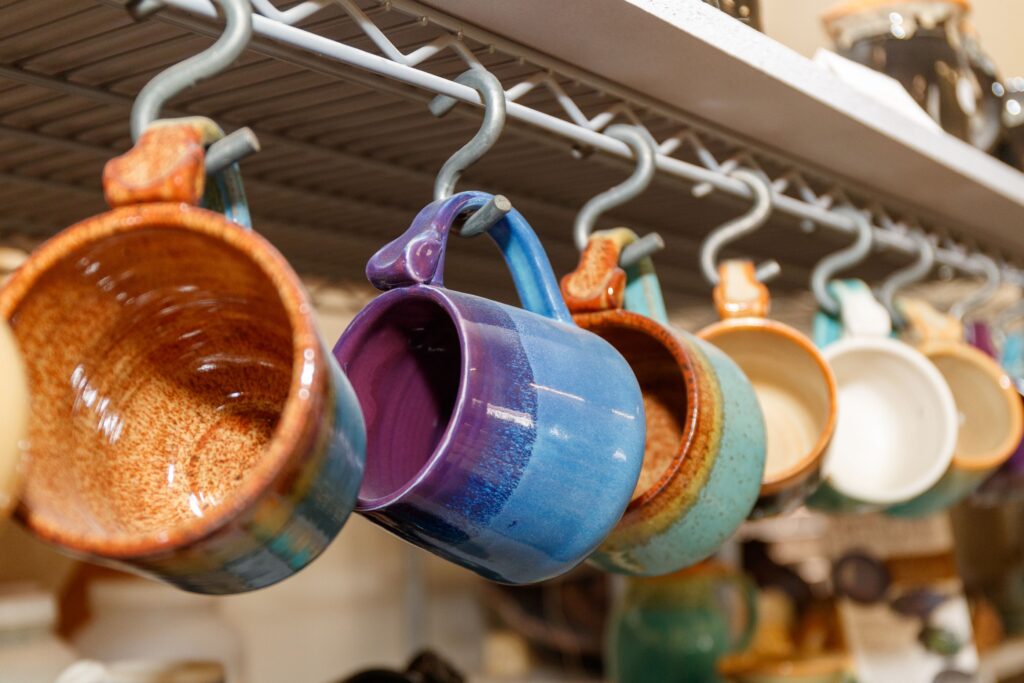
Even so, over the last 53 years, Upp never gave up the art form that he loved. He has exhibited his work at major art shows across the country, won numerous awards and taught classes and workshops, especially workshops focused on glazing techniques. Wherever his travels take him, he connects with other ceramic artists.
When asked what he loves most about ceramics, Upp replied, “I like the meditative part of it. The fact that when you’re on the wheel, you can just be lost, and completely forget about time. Plus, I’m a real music nut.
So, I’ve always got really good music, and that helps the meditation part as well.” Upp observed that while most potters don’t usually like the repetition of doing the same thing repeatedly, he does.
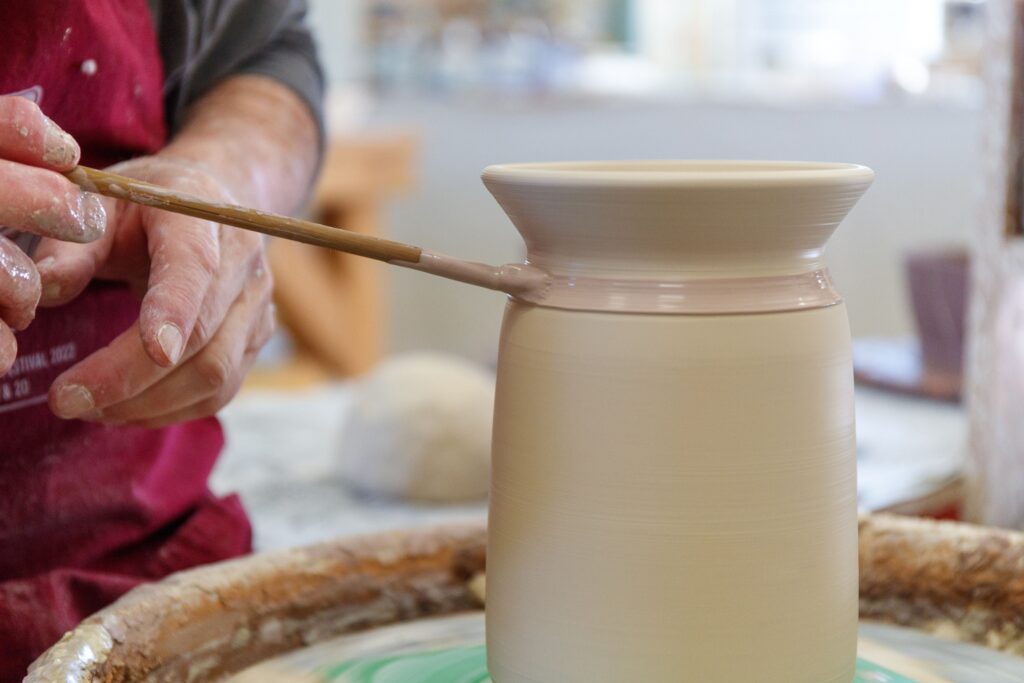
“Repetition is how you get better. I can see improvement when I look at mugs or plates I made a year ago,” he said.
While deep in conversation about renowned potters that he admires, Upp recalled a question that was asked of Cynthia Bringle, a North Carolina ceramic artist who is also his favorite potter: “Are you really proud of the fact that your work is in museums all over the world?” She replied, “Oh, yeah, I definitely am. But I’m most proud of the fact that my work is in kitchens all over the world and is used every day.”
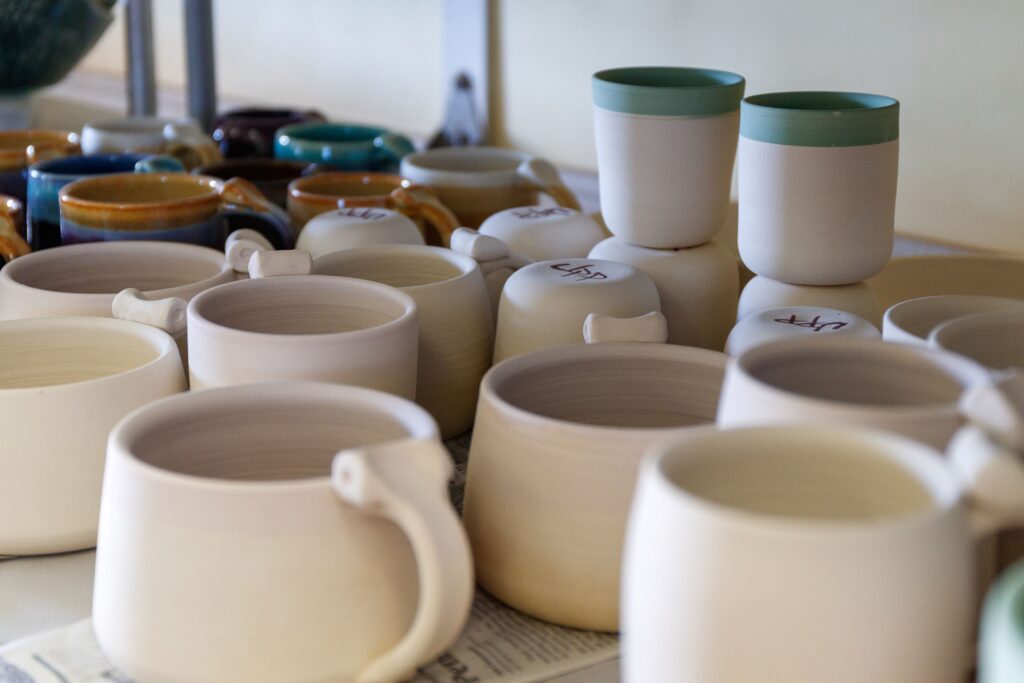
“That really appeals to me,” Upp said. “The fact that I literally get photographs from people with my dinnerware set out on their table certainly makes me proud.”
Upp is looking forward to this year’s studio tour and says that at least 45% to 50% of the people who attend SVAC are repeat customers who bring their friends along.
However, Upp says that he is ready to pass the SVAC baton to someone else so that he can take the time to travel with his wife and explore new places.
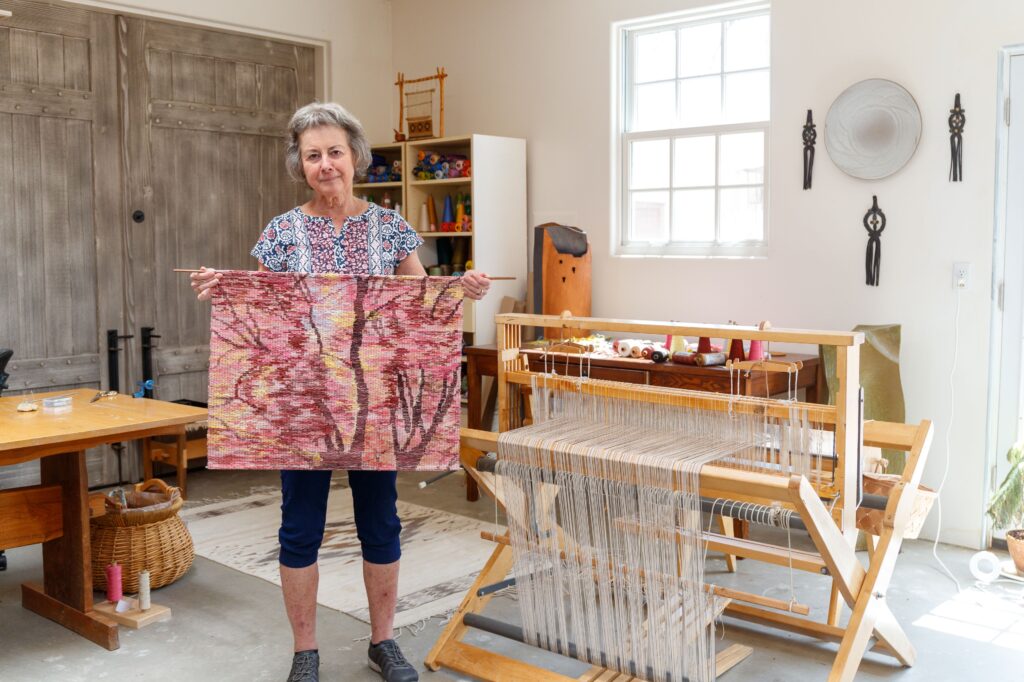
Colors and Patterns: Adele Furby
When Adele Furby sits in her spacious Camp Verde studio at her loom, preparing to begin a project, she has already mapped out a cartoon drawing of what she wants to create using a grid.
Her current project began with an image of autumn trees found in her yard.
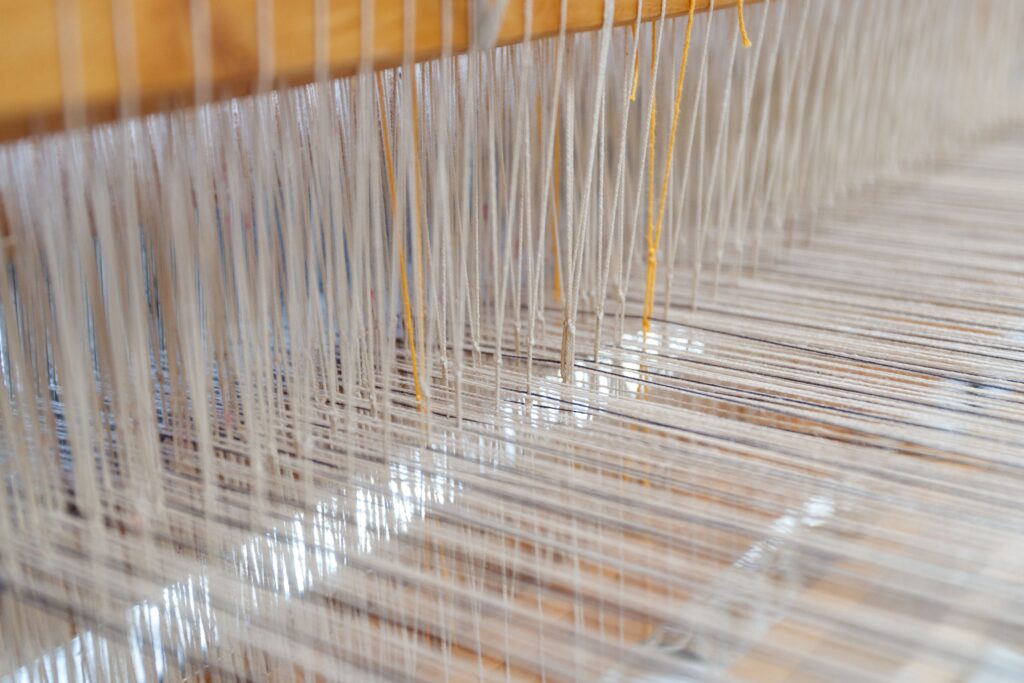
“For me, going through the discipline process of sketching an idea, and really working it out ahead of time and then eventually, that develops into the cartoon,” Furby said. “So, the cartoon helps because at least you’re staying within the parameters of your form and your ideas. That’s where technical knowledge comes in, because it’s so easy in weaving to have an idea and not have it come out at all and you must get good enough — that doesn’t mean it’s going to be perfect. But then to say, ‘What did I learn from this piece?’ That’s part of the challenge.”
After selecting her colors, Furby must then thread her intricate loom. She said it can take as much as four hours to create one inch of woven fabric; however, the process is completely immersive.

“It’s like a puzzle,” Furby said. “Being good at math, being good at geometry, having an intuitive skill; then I think it comes easy. It’s fun to be able to use that and to make something as complex as these pieces.” “On a loom, everything’s getting rolled underneath so you can’t see what you’ve got because it’s going underneath,” Furby added.
“So, it’s fun when you can finally unroll it and see what the whole thing looks like instead of what’s right in front of your face.” Furby was raised in Berkley, California in a very artistic environment that she created.
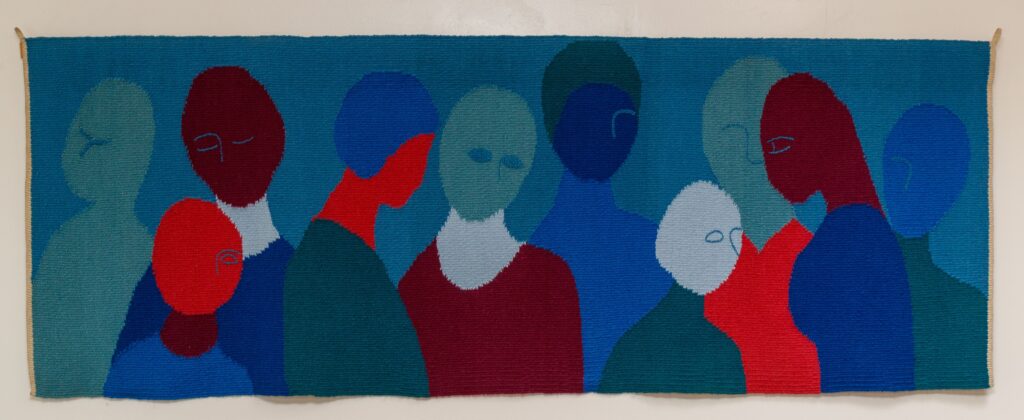
“I was the one begging to take piano when I was in first grade because my sister was five years older and was taking piano and I was told I was too young,” she remembered. “I also wanted to take ballet and I started that really early on and then singing, I was singing right away. My sister was into sports and academics and my brother was into sports, and not so much academics. He was smart.”
Furby explained that her dad was a scientist and her mom was a schoolteacher, and art was not a strong influence in their family.
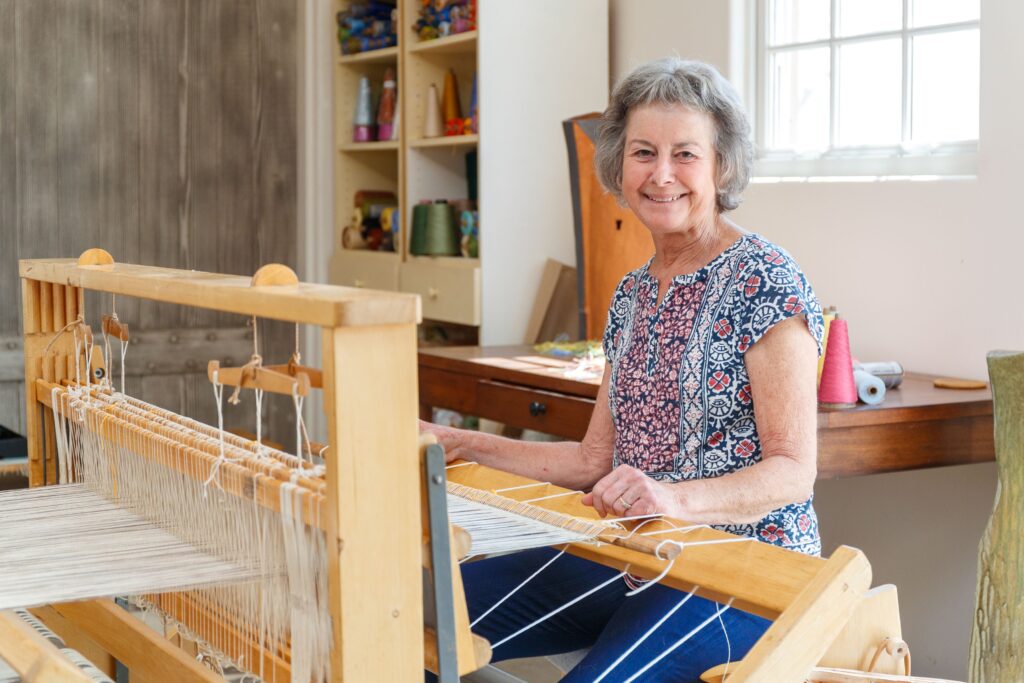
She later attended Antioch College, a private five-year liberal arts school in Yellow Springs, Ohio, where students spend one-third of their undergraduate experience working rather than studying.
“It is where you can have a lot of adventures where you’re actually working and also studying,” Furby said. “I spent a year in Norway and that’s where I really got into weaving.” Furby took the opportunity to immerse herself in the arts, studying fine arts, drawing, painting, playing piano and singing.
“[At Antioch], they let me have a degree in fine arts as a group because it was a combination of the arts. But it’s also true that the weaving grabbed me more. I think it’s important for artists to master their craft,” Furby said. “It’s fine to dabble in things, see what you like or whatever, but you really need to master the craft before you really can do art. I think that’s an important part of it all.”
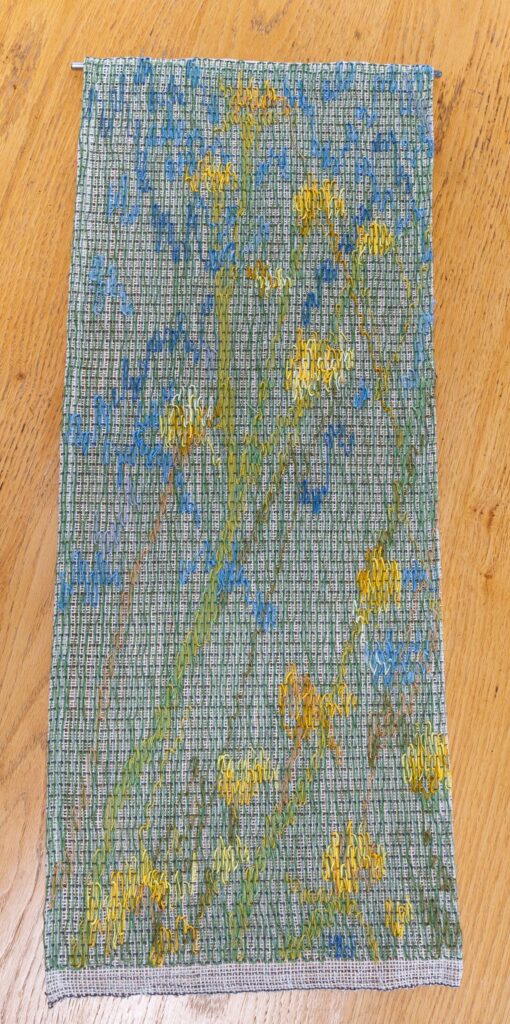
Furby also attended classes at the Banff Centre in Alberta, Canada, and did graduate work in Missoula, Mont. She taught weaving for several years before deciding to make a radical switch.
“I wanted to keep weaving, but it was too sedentary at that stage of my life and so I got involved with horses and wound up bringing over horses from Hungary and Germany that were a special old Austro- Hungarian breed,” she said.
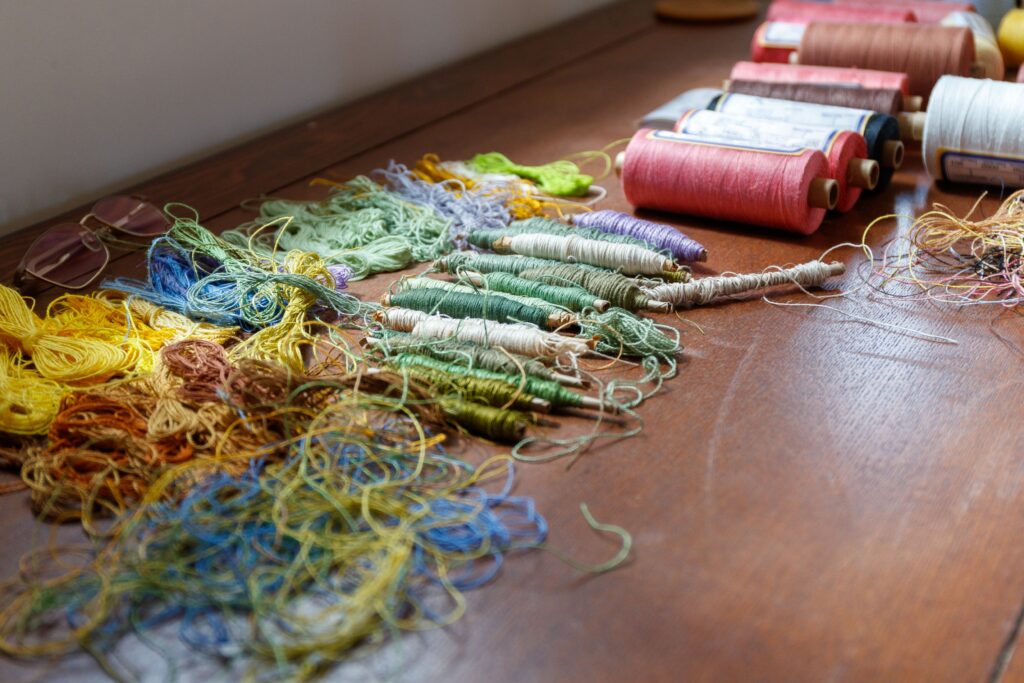
Furby’s connection to Sedona was established through her first husband, who attended the Verde Valley School in the Village of Oak Creek and introduced her to the area. She wanted to get away from the cold winters in Montana and began working with Mary Pendleton, who owned and operated a fiber arts shop in Sedona.
Pendleton helped found the Verde Valley Weavers and Spinners Guild, which was formed over 35 years ago.

After bouncing back and forth between raising horses and creating art, Furby is now content with having just three horses on her property and with fashioning beautiful tapestries on her loom.
While preparing for the artist’s tour, Furby decided to include a display of her late husband Charlie’s ceramic work in her show. She beamed while describing the sculptural techniques of his hand-built pottery, but added that she is ready to let some of it go for others to enjoy.

Painting the Unseen: Kenyon Taylor
Sedona artist Kenyon Taylor said that she grew up with a relatively famous professional artist — her mother, who studied book illustration and then specialized in watercolor portraiture.
“She was a very classically- trained artist, but she always said to me, ‘Don’t ever become an artist, because you’ll never make any money,’” Taylor laughed. “So I had to do quite a bit of work to get those voices out of my head.” Taylor was enamored with art, creating 3-D pieces of artwork and jewelry as a hobby until things began to change in March 2020.
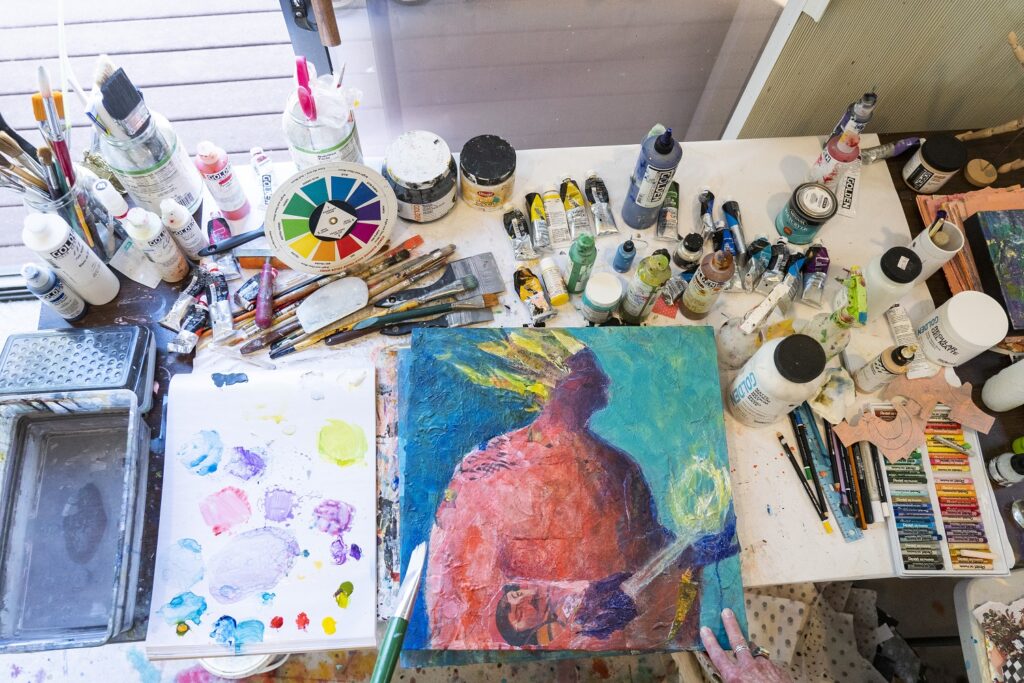
“I was sitting out on my patio, holding a cup of tea, and a bird landed right on my hand right here,” Taylor said. “Her beak was that far from my cheek. I thought to myself, ‘Wow, that’s kind of unusual.’ I don’t think I’ve ever had that happen and then she flies off like no big deal. Later that afternoon, I started getting information in my head, either from her or, I don’t know, about the guardians and that we are totally surrounded by these beings who may or may not be visible to us, but they are standing guard for us.”
Taylor began painting faceless figures in different shapes and sizes, some of which she claims are American Indians while others are angelic beings.
“They’re very demanding that I’m 100% present, or nothing will come out, nothing will come through,” Taylor stated. “So, there’s the preparation — looking at a canvas or looking at a piece of wood, then it starts coming through.
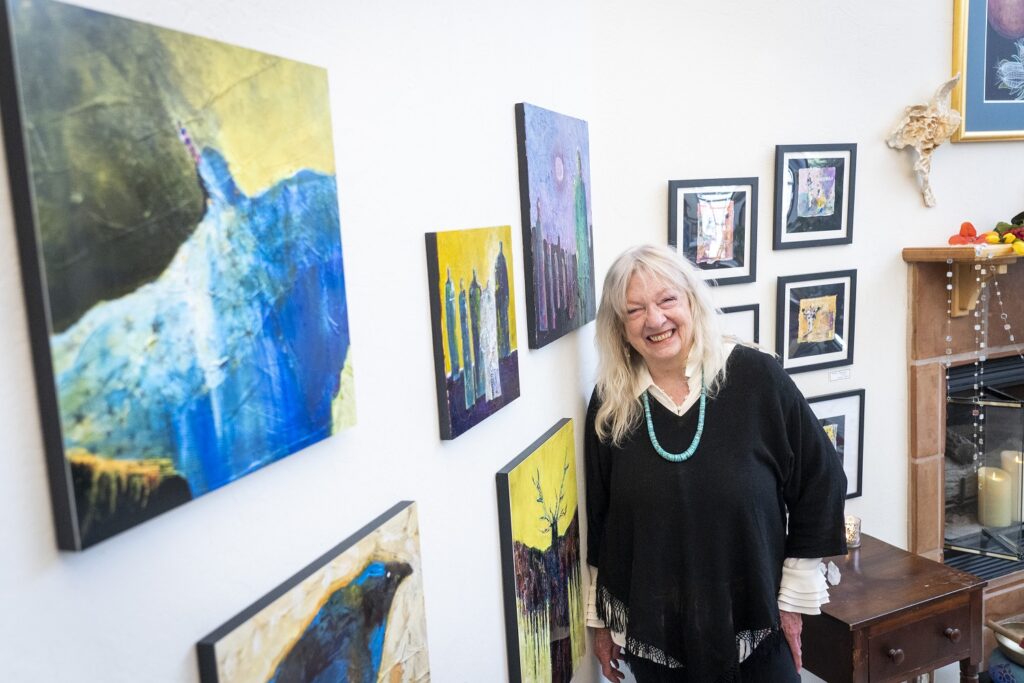
I’m looking at stuff that I can’t even remember doing, to be honest with you.” Taylor said that through divine guidance, she can create art that she said seems to be coming from another dimension.
Taylor has immersed herself in art, calling herself a “denizen of Sedona Arts Center,” which she believes is an incredible resource and which is where she takes individual classes from local and visiting artists.
Taylor said that she waits patiently in the space between the conscious and subconscious, brushes in hand, for the beings she thinks she sees to emerge of their own will, in their own time, with stories to tell.
“Guiding my hands over a day, a week, or sometimes over months, their images coalesce through many layers of paint, glazes and collage until they are finally present. Their worlds and our own, join together,” she said.
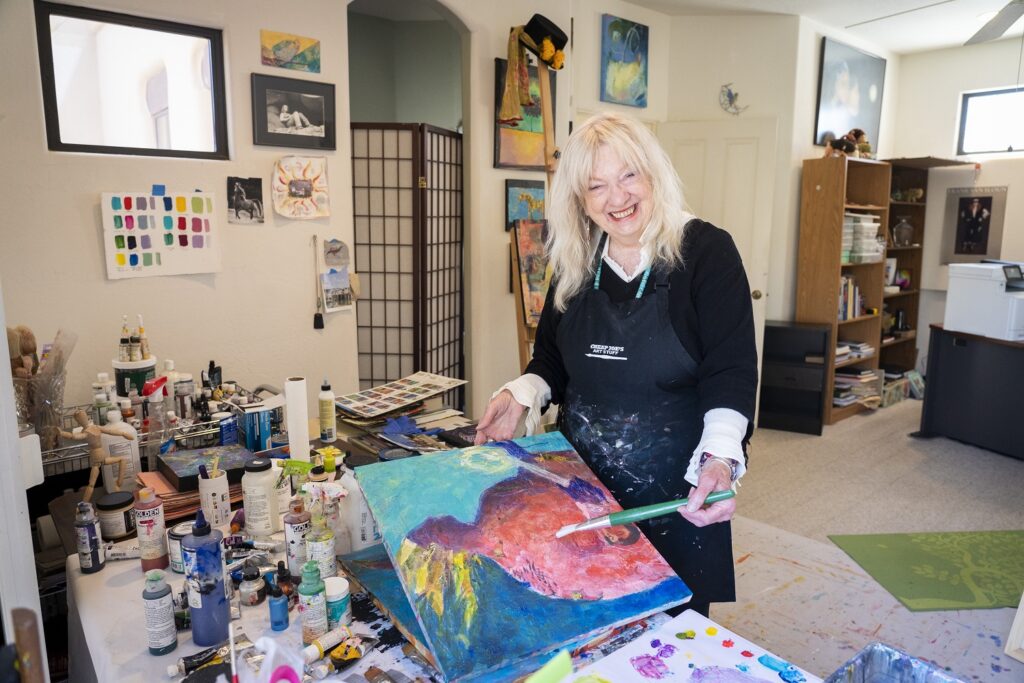
Taylor’s composition “Tribe,” depicting Indians with shadowed figures around them, received an honorable mention at the 2021 Spiritual Art Awards in the 2D mixed media category.
“I have to wait until they are exactly the way they want to look to give the message to whomever they’re trying to reach,” Taylor said. “I try to not have that much to do with that. I don’t want to have a preconception about what I need them to be. They’re really the boss. It’s totally insane.”
Click here for the interactive: TOUR MAP




